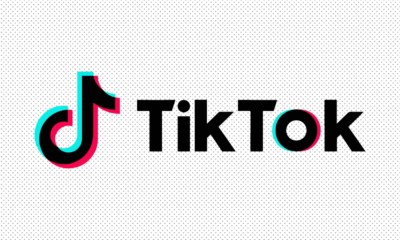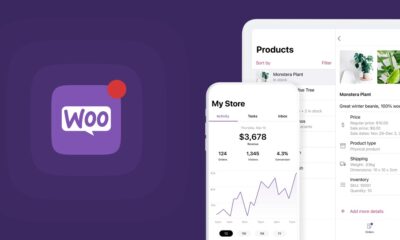Technology
Website Accessibility: 8 Ways to Reach Everyone in Your Audience


Digital inclusion requires a website that is accessible. It ensures that everyone can access essential information on the internet, regardless of their physical capabilities. Sadly, a lot of websites are inaccessible. According to a WebAIM survey, at least one WCAG 2.0 failure may be found on about 98% of web home pages. Many businesses use the Web Content Accessibility Guidelines (WCAG) to improve website accessibility. The de facto industry standard for online accessibility solutions is WCAG website compliance.
What is Web Accessibility?
Website accessibility is maintaining and building your site so that people of all facilities can understand and access the information. That means making sure that the data on your website can be understood and accessed by anyone looking at your website, using a screen reader or blocking video. According to modern website accessibility content instructions, website accessibility for content must be robust, understandable, operable, and perceivable.
What is the meaning of these:
- Robust: All website content needs to be robust enough to be precisely interpreted by employers, whether or not they are using assistive skills.
- Understandable: The operation and UI of the website need to be understandable for the user.
- Operable: A website’s navigation and UI must work in how users function.
- Perceivable: Data must be conveyed to users in a way they can perceive (it can’t be unseen by all of their senses).
- Website accessibility includes your website and any technologies, databases, dashboards, or tools on your site. These should be established to convey data to people of all talents.
- By putting these suggestions in this article into practice, you may boost the usability and inclusiveness of your website, attract a wider audience, and demonstrate your commitment to equality and inclusion.
Why Is An Accessible Website Important?
A website needs to be accessible for the reasons listed below:
- Inclusivity: By being inclusive, your website will be accessible to users and visitors of all abilities. This encourages the growth of an online community where everyone can access the same tools and data.
- Legal Requirements: Several national laws and regulations mandate that websites be accessible to people with impairments. For instance, businesses and organizations must make their websites accessible to people with disabilities under the Americans with Disabilities Act (ADA compliance for websites) in the United States.
- Business Advantages: Making your website accessible may benefit your company. Creating an inclusive online environment may boost consumer happiness and reach a wider audience. Accessible websites can also increase your website’s visibility in search results and attract more visitors.
- Ethical Considerations: It is right to make your website available to everyone. It reveals your respect for diversity and inclusion and your dedication to ensuring everyone can visit your website.
Why is Website Accessibility Vital?
Website accessibility is vital for all companies so that everyone using the internet can understand and access the information on your website. Because if your website isn’t handy, you risk missing potential customers, even facing legal action or alienating your audience. Websites for private companies or government offices with 15 or more employees must be ADA-compliant. And there is a precedent of lawsuits for remote online content.
While compliance is a huge reason to keep accessibility at the top when you are embarking on a redesign or creating a website, it’s far from the only one. According to a recent WHO report, around one billion people globally live with some disability. If your website is modest, this won’t influence you. But even the most simple websites aren’t accessible for entirely avoidable reasons. Also, you want to ensure your content is as wide-ranging as possible, which takes attention, effort, and time.
This isn’t scary but vital, so you’ll need a plan. And now, let us learn about website accessibility solutions, top practices, or strategies you need to know to get started.
Proven Strategies to Make a Website Accessible to Everyone


1. Understand the standards and guidelines.
Before making your website accessible, it’s crucial to grasp the standards and specifications. WCAG 2.1 is the most widely used guideline for creating accessible web content. Despite being frequently cited as the benchmark for digital accessibility, these principles are not legally binding.
2. Color contrast is important
Color contrast is essential for those who are color blind or have poor vision. Ensure a sharp contrast between the background colors and the text to make the text easily readable. The WCAG requires a contrast ratio of at least 4.5:1 for regular text and 3:1 for large text, respectively.
3. Make use of descriptor headings.
Use descriptive headlines to make your website accessible to all users. Headings make your website easier to navigate and understand for those who use screen readers and other assistive devices. To use descriptive headings, arrange your material using HTML heading elements (H1-H6) in a logical order that reflects the hierarchy of your content. he titles, which should be descriptive, should appropriately summarize the material that follows. As a result, users will have an easier time comprehending the layout and structure of your website.
4. Use Alt text for images
Making your website accessible to all employers involves using alt text for pictures. Other assistive technologies and screen readers can read an image’s alt text, a brief account of the image. It makes it simple for those with visual impairments to comprehend its placement on a webpage and an image’s information.
To routine alt text for images, merely add descriptive text in the “alt” quality of the HTML image tag. Alt text should convey the information, be accurate and be concise in the image. In short, adding alt text to images is an effective and straightforward way to improve the digital accessibility of your website.
5. Include transcripts and captions for multimedia
Add multimedia transcripts and subtitles to improve your website’s WCAG compliance score. Captions are text images of audio content, while transcripts are inscribed versions of audio or video content. Adding transcripts and captions to multimedia content supports people with hearing impairments in recognizing the context and content of the media. Add a text path to your audio or video file to offer captions. To offer transcripts, produce a text document that contains a printed version of the audio content. Both transcripts and captions should be synchronized, complete, and accurate with the media.
6. Ensure keyboard accessibility
Accessibility to the keyboard is vital for persons who might be incapable of using a mouse. Confirm that your website’s keyboard border can access all its features and that operators can navigate it using only the Tab key.
7. Offer straightforward navigation
Straightforward navigation is critical for all users, particularly those with incapacities. Ensure users can rapidly locate what they’re looking for on your website and that the direction-finding is easy to understand. Ensure that your website’s navigation is reliable throughout by using descriptive and clear buttons and labels for links.
8. Test your website for accessibility
It’s essential to assess your website accessibility to confirm everyone can use it. The A11Y Accessibility Checker and the WAVE Online Accessibility Assessment Tool are only two tools that can be used to check whether your website imitates the WCAG.
Wrapping up
Making your website accessible for everyone is a fundamental first step in increasing a more varied online community. These 8 suggestions will help you make your website more inclusive and accessible while ensuring that no users with impairment or disabilities are left out. Your website can be made handy to everyone in various ways, including ensuring keyword navigation, offering transcripts and captions for multimedia, and utilizing informative headings.



 General2 months ago
General2 months agoWhat Is Smart Construction? A Beginner’s Guide



 Technology1 month ago
Technology1 month agoHow to Send WooCommerce SMS Notifications for Orders





 Technology1 month ago
Technology1 month ago7 Essential TikTok Metrics to Track for Higher TikTok Views in 2025

 Model3 weeks ago
Model3 weeks agoTiffany Stratton: Biography, Wiki, Age, WWE Career, Net Worth, Before Fame, Boyfriend



 Technology4 weeks ago
Technology4 weeks agoTop 5 Tips for Using File Uploads in Your WooCommerce Store Efficiently

 Technology3 weeks ago
Technology3 weeks agoWhy Airlines Are Using Virtual Reality Services for Pilot Training



 General4 weeks ago
General4 weeks agoThe Hidden Costs of a DUI & How a Lawyer Can Help You Avoid Them





 Technology3 weeks ago
Technology3 weeks agoExploring TikTok AI: My Experience Making a Video With Only Artificial Intelligence




You must be logged in to post a comment Login